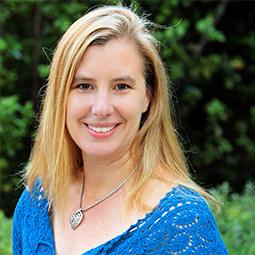A Short Dark Story About Transkid “Desistance”
 Many of the attacks on affirmative treatment of transkids are predicated on the myth that transkids will automatically stop being trans during their teenage years or early adulthood. Some add that reparative “therapy” will increase the odds of desistance. Affirmative treatment refers to letting the child behave in a gender behavior category that was not the one assigned to them at birth. Today affirmative therapy may also include puberty blockers and sex hormones. The goal is to allow the children to have as much time as possible to sort out what they want to do in the future.
Many of the attacks on affirmative treatment of transkids are predicated on the myth that transkids will automatically stop being trans during their teenage years or early adulthood. Some add that reparative “therapy” will increase the odds of desistance. Affirmative treatment refers to letting the child behave in a gender behavior category that was not the one assigned to them at birth. Today affirmative therapy may also include puberty blockers and sex hormones. The goal is to allow the children to have as much time as possible to sort out what they want to do in the future.
Let me say at the outset that I prefer not to use the word “desister” because it has a bad connotation for me. For many years it has been used in sociological studies of “juvenile delinquents” or criminals. I believe it was originally used to apply to transkids by the Dutch in translated articles. They clearly picked the wrong English word in translation, at least for me. Now that I have gotten that out of the way, we can go on, using “continuation” and “discontinuation” of transgender behavior which do not have the criminal connotation.
The strongest evidence for the hypothesis that transkids would discontinue transgender behavior by early adulthood came from the Canadian Center for Addiction and Mental Health (CAMH) in Toronto. They had a gender clinic for kids which used reparative therapy techniques to try to change the behavior of transkids. The frequency of discontinuation reported for this clinic was over 80%.
All that changed when the clinic was terminated last year by the Canadian government and the clinic director was fired. Subsequently, the records of the children were analyzed and early reports came back that a large proportion of the children had been misdiagnosed with gender identity disorder and/or gender dysphoria. These reports called into question the results of CAMH studies about discontinuation of transgender behavior.
The reports of misdiagnosis led me to ask what were those misdiagnosed children doing in a gender clinic in the first place?
My scientific detective work uncovered a very dark story of unethical diagnosis and timid professional conduct. I discovered the dark secret that nearly all of the children studied in research which supported early discontinuation were not transgender at all. In addition, there were certainly methodological flaws in these clinical studies but the importance of these flaws is dwarfed by flaws resulting from this dark secret.
I will not hold you in suspense any longer. Most of the children diagnosed in the studies were not transkids but instead were “pre-homosexual” kids who displayed “cross sex-typed” behavior. All the early relevant articles were uniform in using these terms. The kids, usually 8-12, were reported to be sexually aggressive towards same sex peers. Transkids do not usually present or behave in this way. They are usually withdrawn and are concerned with gender, not sex.
Then I looked at the dates of the articles. Only one study was published before homosexuality was dropped as a disorder. The children were being treated for homosexuality. This was not a legitimate diagnosis according to mental health standards. I can imagine that the parents of “pre-homosexual” children were distressed at the radical behavior of their children. But instead of advocating the need for a “prehomosexual” official diagnosis, these timid professionals used diagnostic categories usually reserved for transgender kids. If these professionals wanted to treat the “prehomosexual” kids, they should have gone to professional societies and changed the disorder classification schemes (e.g. DSM, ICD). Instead they created a category for “gender identity disorder in childhood” which had criteria broad enough to cover the “prehomosexual” children. As the outspoken authorities in their field and having control of the scientific journals, they had the power to create this diagnostic category. When some mental health professionals objected to the scope of this category and the obvious subterfuge, they were shouted down by the authorities, who after all, controlled the funding and publishing channels by peer review and editorship.
Let me be clear that there is nothing wrong about being a homosexual; the only people who had ethics problems were the clinicians. (I actually qualify to be a lesbian.)
The combined outcome of these “prehomosexual” children was that out of 162 children: 62% were diagnosed as adult homosexuals, 4% as GID and 4% were cisgender. These statistics combine the results of 5 such studies that looked at children 8-12 and adult outcomes 18-24. The rest of the children dropped out of the studies before adulthood or their outcomes could not be determined. This does not include the Steensma study (2012) which did not even bother looking for transgender behavior in the adults who had been diagnosed as children. Steensma found 20 of 51 were homosexual. So, the mental health professionals seemed to be right about the outcomes of children with “prehomosexual” behavior becoming adult homosexuals but they were too timid to do the right thing.
It is significant to me that I have been unable to find any scientific papers submitted in the past 7 years on “prehomosexual” children and their outcomes. I have three conjectures about what became of these children but I can find no data on them. Something this severe must be biological. Either the investigators have been persuaded by the crackdown on reparative therapy in many localities and are afraid to publish, they have switched to other categories, or the children are diagnosed as hyperactive and are being prescribed drugs to reduced their behavior. Maybe we will get the answer down the road.
Where does this leave us on the question of what are the outcomes of transgender kids?
There is one study that actually seemed to involve transgender kids. Wallien (2008) found that out of 44 children, 21 enrolled in the gender clinics affirmative treatment program. Affirmative treatment programs only accepted those who are carefully screened as being “insistent, consistent and persistent” about being transgender. Joanna Olsen at Children’s Hospital in Los Angeles and her colleagues will be formally reporting next year on a much larger group of about 800 similar kids. But at a science meeting in Los Angeles in February I heard talks by her team. These kids seem to be doing well with affirmative therapy.
So much for the transkids who are likely to become transsexual. Since only about 10% of transgender people start transsexual transition, what of the non-transsexual transgender folk? Again, I can only make conjectures because these transgender kids and adults are not generally studied. That is undoubtedly because most transgender people never get treated for being transgender by mental health professionals, so they are not usually involved in gender clinics that are the base for the studies. Although some undoubtedly are afraid to practice transgender behavior due to fear of rejection and discovery, many transgender kids engaged in secret transgender behavior. Only 31% actually tell their parents about their transgender behavior. Undoubtedly, some may never practice transgender behavior as adults but these people are also not studied. There are enough transgender people popping up in their forties and later to believe that the biology which leads to transgender behavior never goes away.
In conclusion, we do not have enough scientific evidence to establish a breakdown of outcomes for transgender children. That is undoubtedly because our government research money is oriented to study diseases and being transgender is not a disease. We know that although affirmative treatment is now available, many transkids probably go into secrecy as they have done in the past. We do not know exactly how many of those who choose secrecy continue to practice transgender behavior or how many discontinue. With greater cultural acceptance, those who go into secrecy or discontinue may decrease. But as far as we know, because being transgender has a biological basis, is recognized starting at age 4, and lasts forever. Your results may vary.
Moved to make a comment? Login here and use the comment area below.
Category: Transgender Body & Soul












